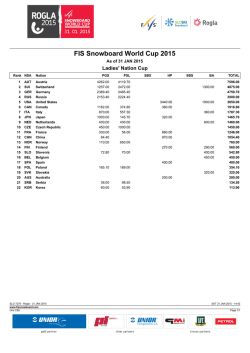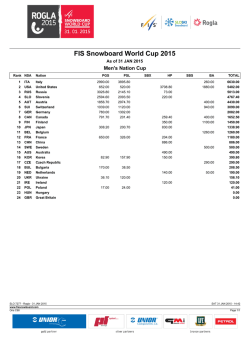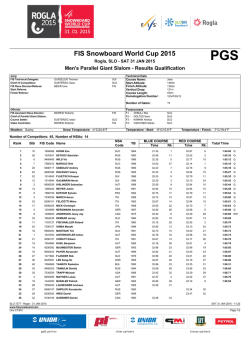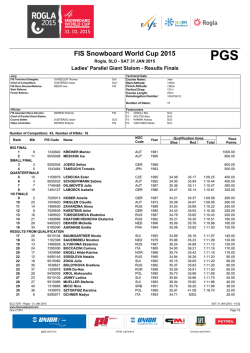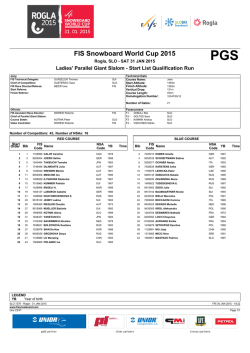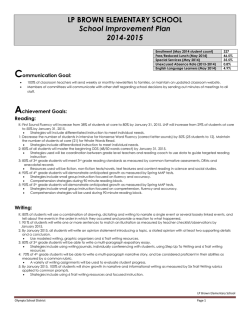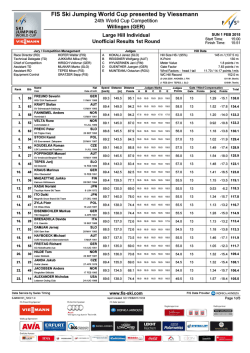
Two Sides of the Same Coin: Competency
Two Sides of the Same Coin: Competency-Based Education and Student Learning Objectives Scott F. Marion National Center for the Improvement of Educational Assessment January 29, 2015 Introduction We are in the midst of two major reform initiatives occupying the attention of school district leaders throughout the country. Teacher evaluation has been the most prominent educational policy issue of the past five years and evaluating teachers in the so-called “non-tested subjects and grades” has been one of the thorniest challenges in the design of these new educator evaluation approaches. Student learning objectives have emerged as the most common approach for documenting teachers contributions to student learning (Hall, Gagnon, Thompson, Schneider, & Marion, 2014). Competency-based education has taken hold to help ensure that students have mastered critical knowledge and skills before becoming eligible for graduation or moving on to the next learning target rather than simply occupying a seat for a certain amount of time. Unfortunately, many school leaders do not see the strong relationship between these two initiatives and feel like they have to do “double-duty” to meet both sets of policy goals. I describe each of these initiatives below and then illustrate how the close connection between the two can create coherence and efficiencies. Competency-based education While there are potentially many definitions of competencies and competency-based education, I rely on the following from Patrick and Sturgis (2013): Competency education is an approach to teaching and learning in which: 1. Students advance upon demonstrated mastery, 2. Competencies include explicit, measurable, transferable learning objectives that empower students, 3. Assessment is meaningful and a positive learning experience for students, 4. Students receive rapid, differentiated support based on their individual learning needs, 5. Learning outcomes emphasize competencies that include the application and creation of knowledge, and 6. The process of reaching learning outcomes encourages students to develop skills and dispositions important for success in college, careers and citizenship. The nature of the competency statements and assessments (#2 and #3 above) are of particular importance for this discussion, but first I expand upon these definitions. Competencies are statements of critical knowledge, skills, and often dispositions that go beyond content standards. They reflect fewer and bigger major ideas of the discipline than more discrete content standards. High quality assessment systems are needed in order to support inferences related to student learning of competencies, especially if the competencies (learning targets) reflect major concepts and skills of the discipline. That is, we need multiple assessments to accurately assess student learning of these complex sets of knowledge, skills and dispositions. Further, these assessment systems must include the types of tools capable of measuring students’ learning of these cognitively complex domains. More bluntly, performance-based or similar types of assessments must play a central role in the assessment system. Student Learning Objectives Student learning objectives have gained popularity as a means of attributing student performance to educators as part of teacher evaluation systems for all teachers, but especially those in NTSG. SLOs are content- and grade/course-specific measurable learning objectives that can be used to document student learning over a defined period of time. SLOs are designed to reflect and incentivize good teaching practices, such as setting clear learning targets, differentiating instruction for students, monitoring students’ progress toward these targets, and evaluating the extent to which students have met the targets. The active involvement of the teacher throughout the process, including establishing learning goals and assessing the degree to which students achieve these goals, is a key advantage of the SLO approach over traditional test-centered approaches to accountability. When designed correctly, SLOs constitute an instructional improvement process for teachers in all grades and subjects, while also providing important accountability information. For those not immersed in the world of SLOs, I present more details about the key components of SLOs below. The Learning Goal The term “learning goal” is used for SLOs purposefully instead of “objective” to reflect the deeper learning targets intended for SLOs, rather than the lower cognitive levels usually targeted by discrete objectives. The learning goal(s) generally will be established by a group of teachers in the same grade and/or subject area and overseen by the state, district or school leadership. The learning goal for an SLO should reflect high leverage knowledge and skills of the discipline (or interdisciplinary), often referred to as a “big idea” of the discipline and may encompass several key content standards. Multiple teachers could (and often should) be working on the same learning goals. Further, depending on the way in which instruction is structured (e.g., students are “shared” across multiple teachers), the results from the same SLO implemented may be shared by multiple teachers. Student Targets The student target is the expected level of performance at the end of the instructional period. Performance targets may differ for students, within reason, and should be appropriate, given the interval of instruction, for the whole class and for special populations (e.g., ELL, SWD). Those proposing SLOs should ensure that the student performance targets are both ambitious and realistic, which can be a very challenging design task. Several have suggested that teachers set targets using available baseline information to help contextualize the learning targets for individuals or groups of students (e.g., Marion, et al., 2012; Lachlan-Haché, Cushing, & Bivona, 2012). Setting ambitious and reasonable targets for SLOs is one of the most challenging aspects of SLO design and implementation. This has been the focus of several recent national meetings as states wrestle with how to approach this in fair and valid ways. Teacher Targets Teacher targets specify how the student aggregate scores (results) will be used to determine the degree to which the teacher has met the SLO targets, whether or not these results will be employed directly or transformed into an indicator for use in accountability determinations. Ideally, school leaders will tailor the targets, in consultation with teachers, to account for specific classroom contexts. Typically, teacher targets and the corresponding performance rating are classified into three or four levels. For example, a teacher may be classified as “not meeting” if less than 50% of the students reach their target, classified as “meeting” if 51-85% of the students reach their target, and classified as “exceeding” if more than 85% of the students reach their target. Obviously, the appropriateness of these targets is contingent upon the learning goal, assessments, and student targets. It will take several years of data collection and analysis to evaluate the appropriateness of these targets. Assessments The assessments used to evaluate the degree to which students have achieved the learning goals should be of high quality; that is, they should be designed to provide credible evidence of how well students have mastered the intended learning goal. First, if the learning goals are of the rich form described above it is unlikely that they will be measured well with just a single assessment. Multiple assessments will be required and we argue that a performance or other authentic assessment must be part of the assessment system designed to evaluate the learning goal. Competency-based SLOs School districts in New Hampshire 1, as well as several districts in other states, are in the process of designing and implementing local educator evaluation systems in addition to responding to requirements (or incentives) to implement competency-based education models. Local education leaders justifiably are concerned that this entails “double work.” There is no question that it 1 For more information on New Hampshire’s state model educator support and evaluation system including the use of SLOs, see: http://www.education.nh.gov/teaching/documents/phase2report.pdf or the Center for Assessment SLO Toolkit: http://www.nciea.org/slo-toolkit/. requires more effort to design and implement two systems compared to one, but the systems should be designed to maximize coherence and efficiency. By now, the connections between SLOs and CBE should becoming clear. SLOs include a learning goal, targets for student and educator performance, and assessments designed to measure student learning of the learning goal. The learning goal should reflect a big idea of the discipline, much the way that a competency statement reflects a big idea of the discipline. The assessments of the student competency, assuming they are appropriately rich and high quality assessments, could (and should) be the same assessments used to evaluate the learning goal of the SLO. SLOs require defining expected levels of student performance on the learning in terms of student targets and evaluating this learning through the use of high quality assessments. These could and likely should be the same targets used to define acceptable levels of performance for students to have met the competency expectation. Finally, the SLO requires an aggregate target (e.g., how many students meet their targets) for judging educator performance. This target is closely linked to the student targets, but other than that, does not have an analogous component in the competency system. Figure 1, below, provides a graphical representation of this relationship. Appropriate Assessments Meaningful Learning Goal Student Competency Student Proficiency Targets Student Accountability Student Learning Objective Aggregate Targets Teacher Accountability Figure 1. The coherence between student competency determinations and student learning objectives. Final Considerations This strong overlap does not mean that the two systems are exactly the same. Most obviously, students generally must master many more competencies than the numbers of SLOs for which teachers are responsible. This is more of a practical implementation reality than a matter of fact. States and districts currently are requiring only one or two SLOs from each participating teacher, even though several have argued that moving to three or four SLOs would support more generalizable inferences (Marion, et al., 2012; Marion & Buckley, in press). Unfortunately, requiring more than one or two SLOs from each teacher or groups of teachers right now will likely cause early educator evaluation systems to crash under their own weight. On the other hand, students are generally responsible for demonstrating competence for approximately six to twelve major learning targets per course, depending on how competencies are organized. Given this partial (at best) overlap of competency statements and SLO learning goals, how should districts proceed to maximize coherence and technical quality of these two systems? First, schools and districts should focus the SLO learning goals on the highest leverage competency statements. I know that advocates of CBE argue that all competencies are important, which is why these systems expect students to meet all competencies, but student mastery of certain sets of knowledge and skills (competencies) can have greater influence over learning other aspects of a discipline compared to less high-leverage competencies. This is not to say that SLOs should focus only on this narrower set of competencies, but it would be a good place to start for early implementation. This means that assessments used to measure student learning of these competencies and SLO learning goals need to be robust enough to provide defensible evidence related to the intended inferences (e.g., the student met the required competency). Second, the SLO learning goals should be rotated among the competency statements over years to ensure that all competencies that are deemed important enough for student accountability also are reflected in educator accountability. Focusing only on a subset of competencies for educator evaluation could lead to a narrowing of the curriculum, but rotating the SLO goals to reflect all of the required course competencies over time could help stem this concern. Finally, the ultimate goal is to have a more seamless integration of SLOs and competencies such that: required competencies reflected a small set of the most critical ideas of a discipline (or across disciplines), the SLO system is designed so teachers are expected (and supported!) to be evaluated on multiple SLOs, and there is a stronger overlap among the SLO learning goals and the required competencies. However, this will require a considerable upgrade in data systems to support SLO use and professional learning opportunities to help teachers and principals develop and use high quality SLOs. Therefore, in the near term, I suggest following one or both of the first two suggestions above. The first step is to build the SLO learning goals directly from the competencies in order to create coherence from the start and to understand the rationale for any intended or unintended incoherence. Nobody is suggesting that implementing CBE and SLOs is for the faint-hearted, but by understanding the close connections, we can create more coherent and efficient systems for students and teachers. References Achieve. (2013). Advancing competency-based pathways to college and career readiness: A state policy framework for graduation requirements, assessment and accountability. Competency-based Pathways Working Group. Hall, E., Gagnon, D., Thompson, J., Schneider, C. & Marion, S. (2014). State practices related to the use of student achievement measures in the evaluation of teachers in non-tested subjects and grades. Retrieved from www.nciea.org. Lachlan-Haché, L., Cushing, E., & Bivona, L. (2012). Student Learning Objectives as Measures of Educator Effectiveness: The Basics. Washington, DC: American Institutes for Research. Marion, S.F. & Buckley, K. (in press). Design and implementation considerations of performance-based and authentic assessments for use in accountability systems. In Braun, H. (ed). Meeting the Challenges to Measurement in an Era of Accountability. Washington, DC: NCME. Marion, S.F. & Buckley, K. (2011). Approaches and considerations for incorporating student performance results from “Non-Tested” grades and subjects into educator effectiveness determinations. National Center for the Improvement of Educational Assessment. www.nciea.org. Marion, S.F., DePascale, C., Domaleski, C., Gong, B., & Diaz-Bilello, E. (2012, May). Considerations for analyzing educators’ contributions to student learning in non-tested subjects and grades with a focus on Student Learning Objectives. National Center for the Improvement of Educational Assessment. www.nciea.org. Patrick, S. & Sturgis, C. (2013). Necessary for Success: Building Mastery of World-Class Skills. A CompetencyWorks Issue Brief, iNACOL. Retrieved from: http://www.competencyworks.org/wpcontent/uploads/2013/02/inacol_cw_issuebrief_building_mastery_final.pdf
© Copyright 2025
